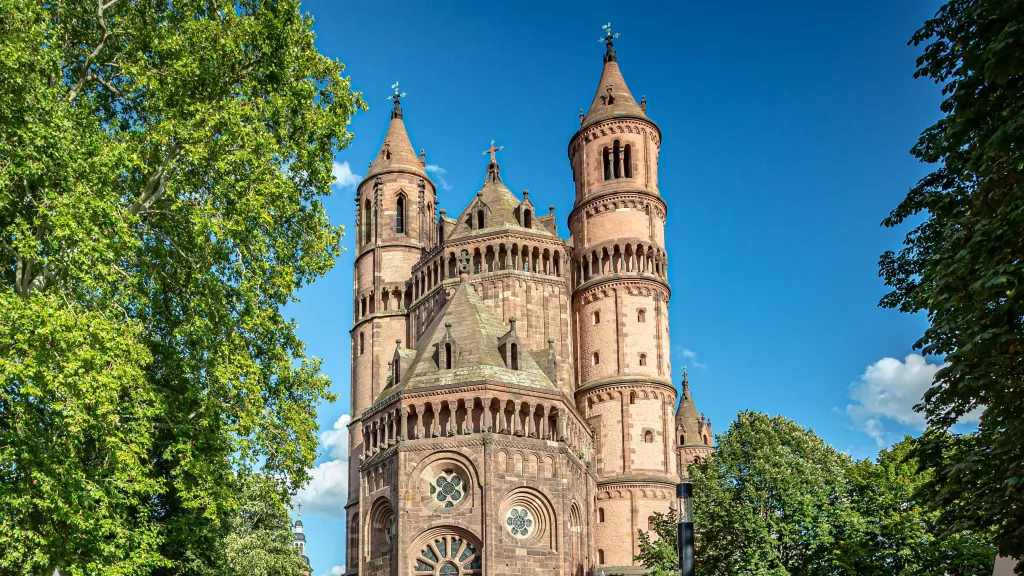The Nibelungs, Martin Luther and the Emperor - all in the shadow of the cathedral
Worms in Rhinehesse is known as the city of the Nibelungs and of Martin Luther and for its cathedral. Together with Speyer Cathedral and Mainz Cathedral, it is one of the three Imperial Cathedrals. They are among the most important achievements of Romanesque church architecture.
St. Peter's Cathedral in Worms made German history in 1048 with the election of Leo IX as Pope and in 1521 with the Imperial Diet at which Martin Luther should renounce his teachings.
Every year in the summer, the cathedral is a magnificent backdrop for the Nibelung Festival. The Nibelung saga is present everywhere in the city and since 2001 has been staged in the Nibelungen Museum at the Worms city wall using modern multimedia technology.
On the bank of the Rhine, Hagen sinks the much sought-after treasure of the Nibelungs in the river. The monument is a popular photo motif on the rhine promenade, a historic park with a clear classical design from the 1920s.
The Luther Monument in the city center, along with the International Reformation Monument in Geneva, is considered the world's largest memorial to the work of Martin Luther.
Worms is home to the "Holy Sand", the oldest preserved Jewish cemetery in Europe with about 2,500 graves. The oldest gravestone dates from 1058/1059 and thus documents the first great flourishing of the Jewish community in Worms, which can be traced back to about the year 1000.
